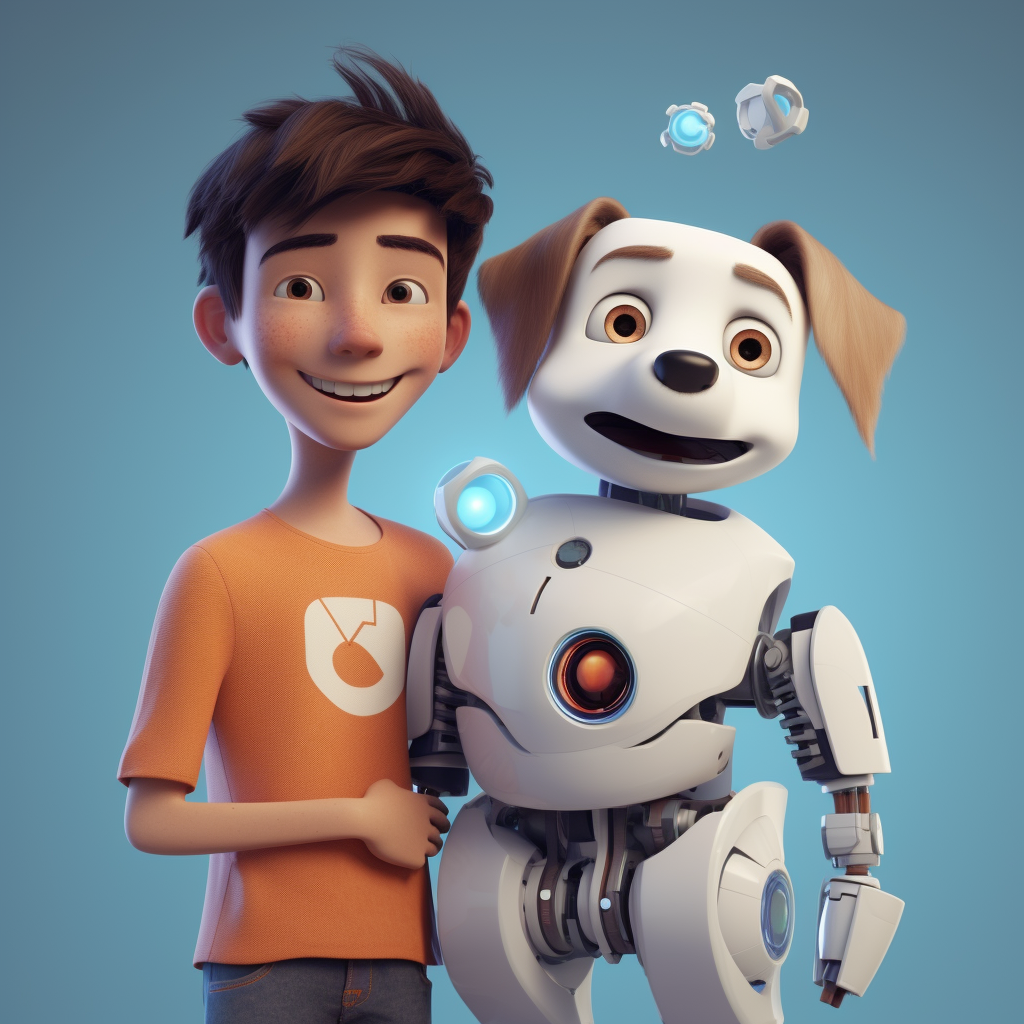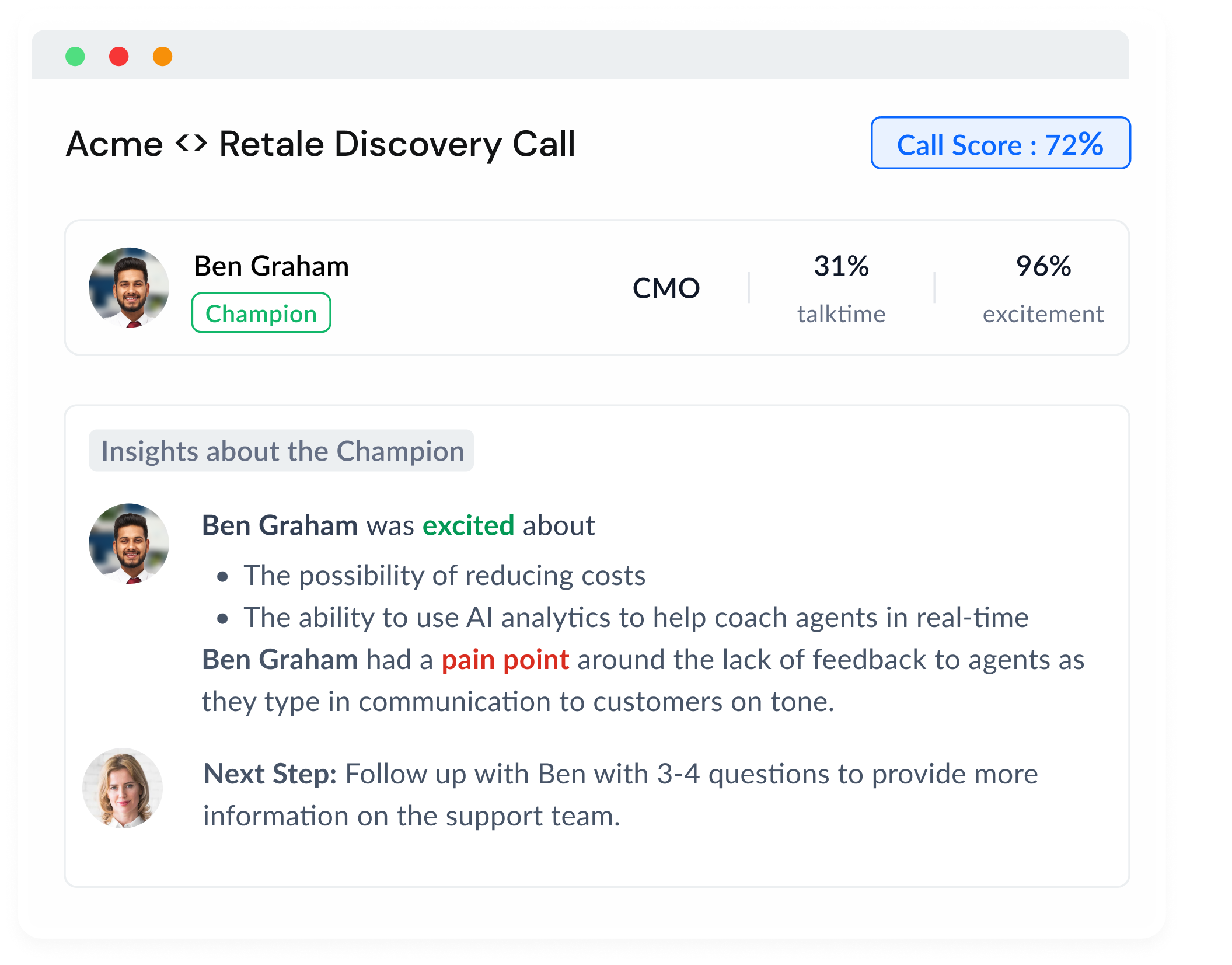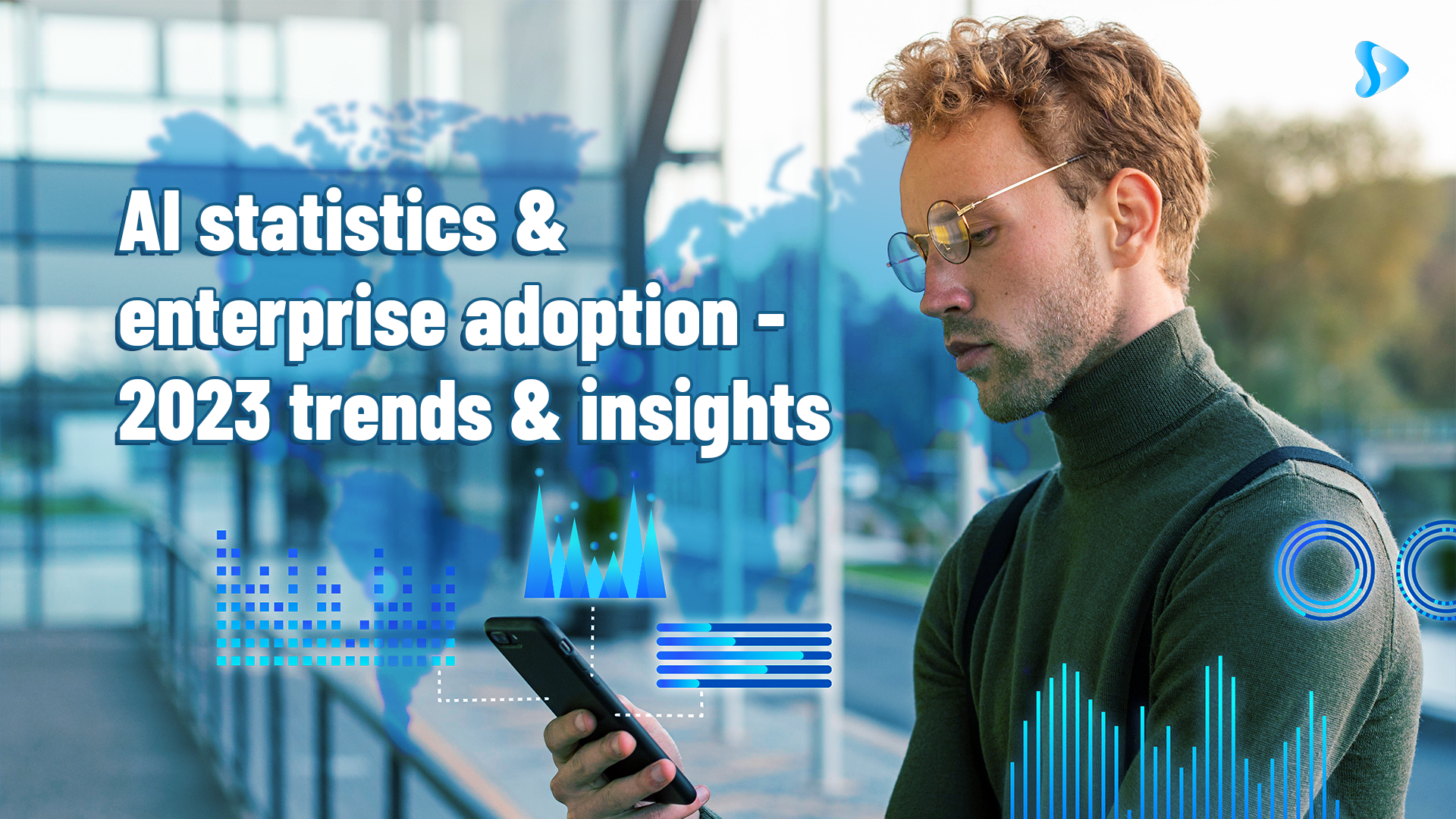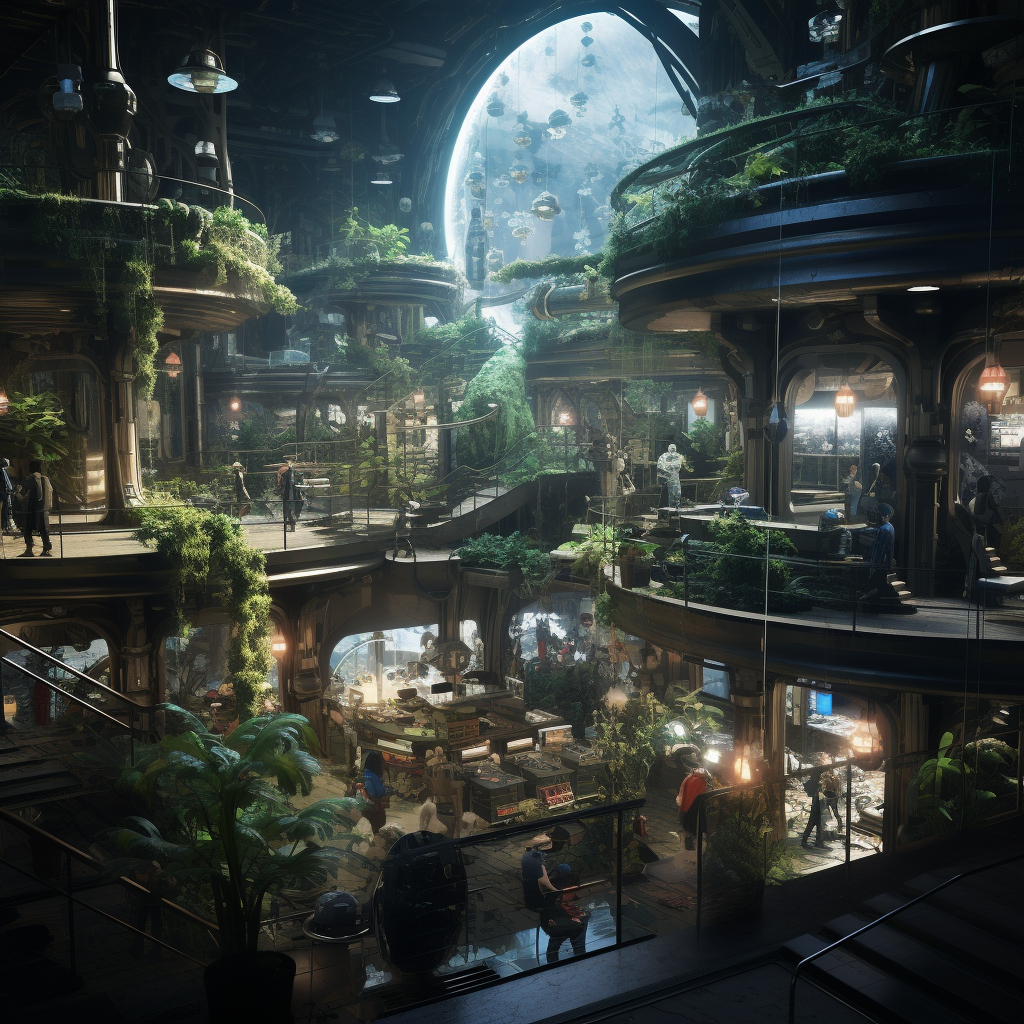What makes an AI system powerful? How do we measure its intelligence, usefulness, and impact? In this blog post, we will explore some of the most powerful AI systems in 2023, from natural language generation to image synthesis to self-driving cars.
But first, let’s define what we mean by a powerful AI. Power is a subjective and relative concept that can be defined in different ways. For example, some might consider an AI system powerful if it can perform a task better than humans, such as playing chess or diagnosing diseases. Others might consider an AI system powerful if it can perform a task that humans cannot, such as generating realistic images in seconds. Still others might consider an AI system powerful if it can perform a task that benefits humanity, such as reducing poverty or improving education.
In this post, we will talk of powerful AI in the sense of most useful and generally applicable AI systems. These are the systems that can solve a wide range of problems across different domains and contexts, and that can adapt to new situations and challenges. These are the systems that can augment human capabilities and enhance human lives.
But before we dive into the examples of these powerful AI systems, let’s take a moment to understand what AI is and how it works.
What is AI and How Does It Work?
AI stands for artificial intelligence, which is the science and engineering of creating machines or software that can perform tasks that normally require human intelligence, such as reasoning, learning, decision making, perception, and communication.
AI is not a single technology or technique, but rather a broad field that encompasses many subfields and applications. Some of the main subfields of AI include:
- Machine learning: The study of algorithms and models that can learn from data and improve their performance over time.
- Computer vision: The study of algorithms and models that can process and understand visual information, such as images and videos.
- Natural language processing: The study of algorithms and models that can process and understand natural language, such as text and speech.
- Robotics: The study of machines that can interact with the physical world through sensors and actuators.
- Artificial neural networks: A type of machine learning model that consists of layers of interconnected nodes that mimic the structure and function of biological neurons.
- Deep learning: A type of machine learning that uses artificial neural networks with multiple layers to learn complex patterns and features from large amounts of data.
AI works by combining data, algorithms, and computing power to create systems that can perform tasks that normally require human intelligence. For example, an AI system that can generate realistic images might use a large dataset of images as input, an algorithm that can learn how to synthesize new images based on the input data, and a powerful computer that can run the algorithm efficiently.
AI is advancing rapidly and creating new possibilities and challenges for humanity. Some of the factors that are driving the progress of AI include:
- The availability of large amounts of data from various sources, such as social media, sensors, cameras, etc.
- The development of more sophisticated algorithms and models that can learn from data and generate outputs.
- The improvement of computing power and hardware that can process data and run algorithms faster and cheaper.
- The increase of research and innovation in AI across academia, industry, and government.
AI is transforming various aspects of our society and economy, such as education, health care, entertainment, business, and security. It is also raising important ethical, social, and legal questions, such as privacy, fairness, accountability, and human dignity.
In this blog post, we will introduce some of the most powerful AI systems in 2023 and why they matter.
Natural Language Generation: ChatGPT and more
Natural language generation (NLG) is the process of creating natural language text or speech from non-linguistic input, such as data, images, or keywords. NLG is important for communication, education, entertainment, and business, as it can help us express our ideas, learn new information, enjoy creative content, and interact with others.
Some of the most powerful NLG systems in 2023 are:
- ChatGPT: A state-of-the-art conversational agent that can generate coherent and engaging responses to any text input. ChatGPT is based on GPT-4, a massive neural network with over 100 billion parameters (a measure of its complexity and capacity). ChatGPT can handle various types of conversations, such as casual chat, trivia, storytelling, role-playing, etc. It can also adapt to different personalities, tones, and styles, depending on the context and the user’s preferences. ChatGPT is one of the most powerful NLG systems in 2023 because it can create natural and human-like conversations that can entertain, educate, and assist users.
- Llama: An open-source NLG system that aims to democratize access to natural language generation. Llama is based on a neural network with 10 billion parameters that can generate text for various tasks and domains, similar to GPT-3. However, unlike GPT-3, which is proprietary and requires a license to use, Llama is free and open for anyone to use and modify. Llama is one of the most powerful NLG systems in 2023 because it can empower users to create their own custom NLG applications and solutions.
- Huggingchat: A web-based platform that allows users to chat with various NLG models. Huggingchat is powered by Hugging Face, a company that provides open-source tools and resources for natural language processing. Huggingchat is one of the most powerful NLG systems in 2023 because it can enable users to experience and compare different NLG models and their outputs.
- Claude: The language model by Anthropic that favors safety in producing outputs, and prioritizes use cases of LLMs in business applications. It follows Anthropic’s principles of Constitutional AI.
These are some of the examples of the most powerful NLG systems in 2023 and why they matter. However, these systems are not perfect and have their own limitations, applications, and impacts.
Some of the benefits of using NLG systems include:
- Creativity: NLG systems can generate novel and original text that can inspire and delight users.
- Personalization: NLG systems can tailor their text to the user’s preferences and needs, such as language, tone, style, etc.
- Productivity: NLG systems can automate and streamline tasks that involve generating text, such as writing reports, emails, summaries, etc.
- Accessibility: NLG systems can make information and knowledge more accessible and understandable for users, such as translating text, answering questions, explaining concepts, etc.
Some of the risks of using NLG systems include:
- Misinformation: NLG systems can generate false or misleading text that can deceive or harm users, such as spreading rumors, propaganda, scams, etc.
- Bias: NLG systems can generate text that reflects or amplifies the biases or prejudices of their data or algorithms, such as racism, sexism, hate speech, etc.
- Manipulation: NLG systems can generate text that influences or persuades users to do something or believe something that may not be in their best interest, such as buying a product, voting for a candidate, joining a cult, etc.
- Alienation: NLG systems can generate text that reduces or replaces human interaction or expression, such as chatting with a bot instead of a friend, reading a generated story instead of a written one, etc.
Therefore, it is important to use NLG systems responsibly and critically, and to be aware of their potential benefits and risks.
In the next section, we will introduce some of the most powerful image synthesis systems in 2023 and why they matter. Stay tuned!
Image Synthesis: Stable Diffusion, Midjourney, Bing Image Generator
Image synthesis is the process of creating realistic and novel images from non-visual input, such as text, sketches, or keywords. Image synthesis is important for art, design, gaming, medicine, and security, as it can help us create and visualize new concepts, scenarios, and objects.
Some of the most powerful image synthesis systems in 2023 are:
- Stable Diffusion: A state-of-the-art image synthesis system that can generate high-resolution and photorealistic images from text or keywords. Stable Diffusion is based on a neural network that uses a diffusion process to gradually refine an image from noise to the desired output. Stable Diffusion can generate images for various domains and tasks, such as faces, animals, landscapes, logos, etc. Stable Diffusion is one of the most powerful image synthesis systems in 2023 because it can produce images that are indistinguishable from real photos.
- Midjourney: A novel image synthesis system that can generate images that blend two or more concepts or styles. Midjourney is based on a neural network that uses a style transfer technique to combine the features and attributes of different images into a new image. Midjourney can generate images for various domains and tasks, such as art, fashion, architecture, etc. Midjourney is one of the most powerful image synthesis systems in 2023 because it can create images that are unique and creative.
- Bing Image Generator: A web-based platform that allows users to generate images from text or keywords using OpenAI’s Dall E models. Bing Image Generator is powered by Bing, a search engine that provides web search and other services.
These are some of the examples of the most powerful image synthesis systems in 2023 and why they matter. However, these systems are not perfect and have their own limitations, applications, and impacts.
Some of the benefits of using image synthesis systems include:
- Realism: Image synthesis systems can generate images that are realistic and detailed, which can enhance the quality and credibility of the images.
- Diversity: Image synthesis systems can generate images that are diverse and varied, which can increase the choice and representation of the images.
- Creativity: Image synthesis systems can generate images that are novel and original, which can inspire and delight users.
- Utility: Image synthesis systems can generate images that are useful and relevant for various purposes and audiences, such as creating art, designing products, simulating environments, etc.
Some of the risks of using image synthesis systems include:
- Manipulation: Image synthesis systems can generate images that are false or misleading, which can deceive or harm users, such as creating fake news, propaganda, scams, etc.
- Bias: Image synthesis systems can generate images that reflect or amplify the biases or prejudices of their data or algorithms, such as racism, sexism, hate speech, etc.
- Privacy: Image synthesis systems can generate images that violate or compromise the privacy or security of users, such as creating fake identities, faces, or documents, etc.
- Alienation: Image synthesis systems can generate images that reduce or replace human creativity or expression, such as creating art, design, or photography, etc.
Therefore, it is important to use image synthesis systems responsibly and critically, and to be aware of their potential benefits and risks.
In the next section, we will introduce some of the most powerful non-generative AI systems in 2023 and why they matter. Stay tuned!
Non-generative AI Systems: Self-driving AI, AI in Robotics and Healthcare
Non-generative AI systems are the systems that do not create new content or data, but rather perform tasks that involve analyzing, processing, or manipulating existing content or data. Non-generative AI systems are important for transportation, industry, and health, as they can help us improve efficiency, productivity, safety, and quality of life.
Some of the most powerful non-generative AI systems in 2023 are:
- Self-driving AI: A type of AI system that can control a vehicle without human intervention. Self-driving AI is based on a combination of sensors, cameras, radars, lidars, maps, and algorithms that can perceive the environment, plan the route, and execute the actions. Self-driving AI can operate in various modes and levels of autonomy, from driver assistance to full automation. Self-driving AI is one of the most powerful non-generative AI systems in 2023 because it can revolutionize transportation and mobility.
- AI in Robotics: A type of AI system that can control a machine that can interact with the physical world through sensors and actuators. AI in robotics is based on a combination of hardware, software, and algorithms that can enable the machine to perform various tasks and behaviors, such as locomotion, manipulation, navigation, coordination, etc. AI in robotics can operate in various domains and contexts, such as industry, agriculture, military, entertainment, etc. AI in robotics is one of the most powerful non-generative AI systems in 2023 because it can enhance human capabilities and productivity.
- AI in Healthcare: A type of AI system that can assist or augment human health professionals in various aspects of healthcare delivery and management. AI in healthcare is based on a combination of data, algorithms, and devices that can enable the system to perform various tasks and functions, such as diagnosis, treatment, monitoring, prevention, etc. AI in healthcare can operate in various domains and contexts, such as primary care, specialty care, public health, etc. AI in healthcare is one of the most powerful non-generative AI systems in 2023 because it can improve health outcomes and quality of life.
These are some of the examples of the most powerful non-generative AI systems in 2023 and why they matter. However, these systems are not perfect and have their own limitations, applications, and impacts.
The Most Powerful AI for Your Use Case: How to Choose the Right Solution
As we have seen, there is no one-size-fits-all AI solution for every problem or goal, and that the most powerful AI for your use case may not be the most powerful AI in general. For example, even the best natural language generation systems may be ill-suited for your particular problem, and maybe just a simple linear regressor might solve it better than complex systems.
So how do you choose the right AI solution for your use case? Here are some criteria and guidelines that can help you make an informed and effective decision:
- Accuracy: How well does the AI solution perform the task or function that you want it to do? How often does it make mistakes or errors? How does it compare to other AI solutions or human performance?
- Speed: How fast does the AI solution perform the task or function that you want it to do? How long does it take to process the input or generate the output? How does it compare to other AI solutions or human performance?
- Cost: How much does the AI solution cost to use or maintain? How much resources does it require to run or operate? How does it compare to other AI solutions or human performance?
- Scalability: How well does the AI solution handle large amounts of data or users? How easy is it to expand or adapt the AI solution to new situations or challenges? How does it compare to other AI solutions or human performance?
- Interpretability: How easy is it to understand how the AI solution works or why it makes certain decisions or actions? How transparent is the AI solution about its data, algorithms, and outputs? How does it compare to other AI solutions or human performance?
- Ethicality: How aligned is the AI solution with your values and principles? How respectful is the AI solution of your privacy and security? How fair is the AI solution of your rights and interests? How does it compare to other AI solutions or human performance?
These are some of the criteria and guidelines that can help you choose the right AI solution for your use case. However, these are not exhaustive or definitive, and you may have other factors or preferences that are important for you. Therefore, you should always test and evaluate your AI solution before deploying it, and seek feedback from your users and stakeholders.
One of the most powerful AI systems for sales teams is Sybill - it records, transcribes and summarizes sales conversations, and generates follow-up emails, auto-fills Salesforce or Hubspot CRM fields, and provides insights to the sellers on what got their buyers excited. It’s a multimodal AI engine that captures insights from verbal and non-verbal reactions of prospects, which helps it get a 360 degree view of the conversation and the deal at large.
The most powerful AI for your use case is the one that meets your needs and expectations, and that can help you achieve your goals and dreams.















.png)





